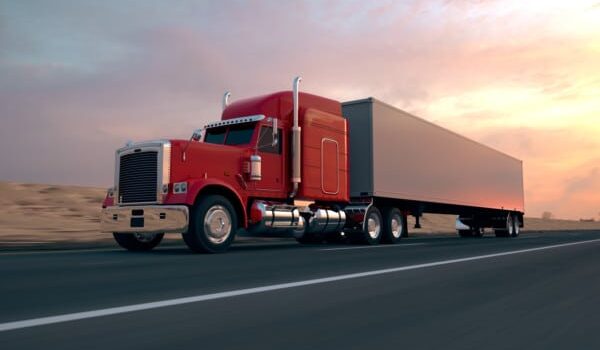Operating a semi truck is a demanding profession, one that keeps the economy moving by transporting goods across vast distances. These powerful machines, also known as tractor-trailers or 18-wheelers, represent significant investments and pose unique risks on the road. As a result, securing adequate semi truck insurance is not just a legal requirement; it’s a critical part of managing risk and protecting your business.
Toc
Unlike standard auto insurance or even insurance for smaller commercial vehicles, semi truck insurance is complex, specialized, and typically one of the largest operating expenses for trucking companies and owner-operators. Understanding the nuances of this coverage is essential for ensuring compliance, protecting your assets, and making informed decisions about your policy.
This guide provides an overview of what semi truck insurance entails, why it’s different, the key coverages you need, and the factors that influence its cost.
Why Semi Truck Insurance is Unique (and Often Expensive)

Semi trucks stand apart from other vehicles on the road due to several factors that contribute to their specific insurance needs and higher costs:
- Size and Weight: Semi trucks are massive and weigh tens of thousands of pounds (or more with a loaded trailer). In an accident, they can cause catastrophic damage to other vehicles, infrastructure, and severe, even fatal, injuries. This potential for extensive harm is a primary driver of high liability insurance costs.
- Vehicle and Trailer Value: The tractor unit itself is a substantial investment, and trailers (box, flatbed, reefer, etc.) also add significant value. Replacing or repairing these requires comprehensive physical damage coverage.
- Usage and Exposure: Semi trucks typically operate on highways for long distances, often crossing state lines. Higher mileage and operating in diverse conditions increases the likelihood of incidents compared to local or personal-use vehicles.
- Cargo Risk: Semi trucks haul valuable goods. Insurance must cover the potential loss or damage of the freight being transported, adding another layer of complexity and cost, depending on the type and value of the cargo.
- Regulatory Requirements: Commercial semi trucks operating interstate are subject to strict federal regulations from the Federal Motor Carrier Safety Administration (FMCSA), which mandate specific insurance coverages and high minimum liability limits to ensure public safety. State regulations also apply.
These factors necessitate specialized insurance products designed specifically for the trucking industry, making semi truck insurance a distinct field.
Key Coverages for Semi Truck Insurance
A comprehensive semi truck insurance policy is typically a package of several different coverages designed to protect against various risks. Here are the most critical ones:
2. https://duocphamvietduc.com.vn/mmoga-rv-insurance-your-essential-companion-on-every-adventure-road/
3. https://duocphamvietduc.com.vn/motor-home-insurance-your-guide-to-protecting-your-rv-in-2025/
-
Primary Auto Liability: This is the foundation of almost all commercial truck insurance policies and is legally required. It covers bodily injury and property damage that your truck causes to others in an accident where you are at fault. Due to the high potential for damage caused by semi trucks, federal regulations (and often state laws) mandate very high minimum liability limits, typically starting at $750,000 but often $1 million or more, depending on the cargo type. This coverage is usually the most expensive part of a semi truck insurance policy.
-
Physical Damage Coverage: This covers damage to your own truck (tractor and trailer) if it is involved in a collision or other covered event.
- Collision: Covers damage from accidents involving another vehicle or object.
- Comprehensive: Covers damage from non-collision events like theft, vandalism, fire, natural disasters, and hitting an animal.
- This coverage is essential to protect your investment, but its cost is based on the value of your equipment and your chosen deductible.
-
Motor Truck Cargo Insurance: Covers the loss or damage of the freight or commodity being hauled by your semi truck. This is vital for truckers hauling goods for hire. The cost and required limits depend heavily on the type of cargo (e.g., general freight vs. hazardous materials, electronics, or refrigerated goods).
-
General Liability (Optional but Recommended): While auto liability covers accidents on the road, general liability covers other business-related risks not directly involving driving. This could include incidents that occur at loading docks, premises liability at your terminal, or errors and omissions related to your services.
-
Bobtail / Deadhead Liability: This coverage is needed when the tractor is being driven without a loaded trailer, or with an empty trailer after delivering a load. It provides liability coverage for the tractor unit when it’s not being used for hauling a specific load under a dispatch. It’s often required by motor carriers when owner-operators are leased to them.
-
Non-Trucking Liability: Similar to Bobtail coverage, but applies specifically when a leased tractor is being used for personal reasons, not related to the motor carrier’s business operations.
-
Downtime / Loss of Use: This optional coverage helps reimburse the business for lost income if the semi truck is out of service due to a covered physical damage claim. For owner-operators who rely on their single truck for income, this coverage can be very valuable.
-
Medical Payments / Personal Injury Protection (PIP): Covers medical expenses for the driver and passengers, regardless of fault.
-
Uninsured / Underinsured Motorist: Protects you if you are involved in an accident with a driver who has no insurance or insufficient insurance to cover the 1 damages.
Choosing the right combination of these coverages is crucial for a comprehensive semi truck insurance policy. While some coverages are optional, neglecting key protections like high liability limits or cargo coverage could lead to devastating financial losses.
Factors That Influence Semi Truck Insurance Costs
The cost of semi truck insurance varies significantly based on a multitude of factors. Understanding these helps you manage your premium:
- Operating Radius: This is a major factor. Local haulers (within 50-100 miles) generally pay less than intermediate (multiple states) or long-haul/interstate operators due to lower mileage and less exposure to varied road conditions and state regulations.
- Cargo Type: Hauling hazardous materials (HazMat), oversized loads, or high-value goods is significantly more expensive to insure than general freight.
- Driving Records & Experience: The safety records and years of experience of all drivers on the policy (including the owner-operator) heavily influence costs. Clean records and significant experience lead to lower rates.
- Claims History: Past insurance claims filed by the business or operator will increase premiums.
- Vehicle Age & Value: Newer, more valuable tractors and trailers cost more to repair or replace, impacting physical damage premiums.
- Required Filings: Needing specific state or federal (FMCSA) filings adds cost and complexity.
- Coverage Limits & Deductibles: Higher liability or cargo limits increase the premium, while choosing higher physical damage deductibles decreases it.
- Location: Insurance rates vary by state and region based on factors like traffic density, accident rates, and local regulations.
- Safety Technology: Trucks equipped with safety features like collision mitigation systems, lane departure warnings, or dash cameras may qualify for discounts.
- Business Structure: Whether you operate as an owner-operator leased to a carrier or have your own authority impacts required coverages and costs.
Tips for Managing Semi Truck Insurance Costs

Given the high cost of semi truck insurance, finding ways to manage your premium is essential for profitability:
- Work with a Specialty Truck Insurance Agent: Semi truck insurance is complex. An independent agent who specializes in commercial trucking understands the industry, regulations, and can shop quotes from multiple carriers that focus on trucking.
- Prioritize Safety: Maintaining a clean driving record, hiring experienced drivers, and implementing safety programs are the most effective long-term strategies for reducing your insurance costs by lowering your risk profile.
- Evaluate Coverage Needs Accurately: Don’t guess at your insurance needs. Work with your agent to determine the necessary liability limits (especially FMCSA minimums), cargo coverage based on what you haul, and physical damage coverage based on your equipment’s value. Avoid paying for unnecessary coverage, but never underinsure critical risks.
- Increase Your Physical Damage Deductible: If you have the financial reserves to cover a higher out-of-pocket amount in case of damage, choosing a higher deductible can significantly lower your physical damage premium.
- Ask About Discounts: Inquire about discounts for experienced drivers, safety programs, association memberships, paying your premium in full, or equipping trucks with safety technology.
- Review Your Policy Annually: Insurance needs and rates change. Before renewal, review your current policy with your agent to ensure it still meets your operational needs and get quotes from other carriers to ensure you’re getting a competitive rate.
Conclusion
Semi truck insurance is a complex but vital aspect of operating a big rig. It’s designed to protect against the significant risks inherent in hauling freight over long distances. While the costs can be high, understanding the specific coverages required for semi trucks and the factors that influence premiums empowers you to make informed decisions.
By partnering with an experienced truck insurance specialist, prioritizing safety, carefully evaluating your coverage needs, and actively seeking ways to manage costs through deductibles and discounts, you can navigate the world of semi truck insurance more effectively. Securing the right coverage provides essential financial protection and regulatory compliance, allowing you to focus on keeping the wheels turning.





